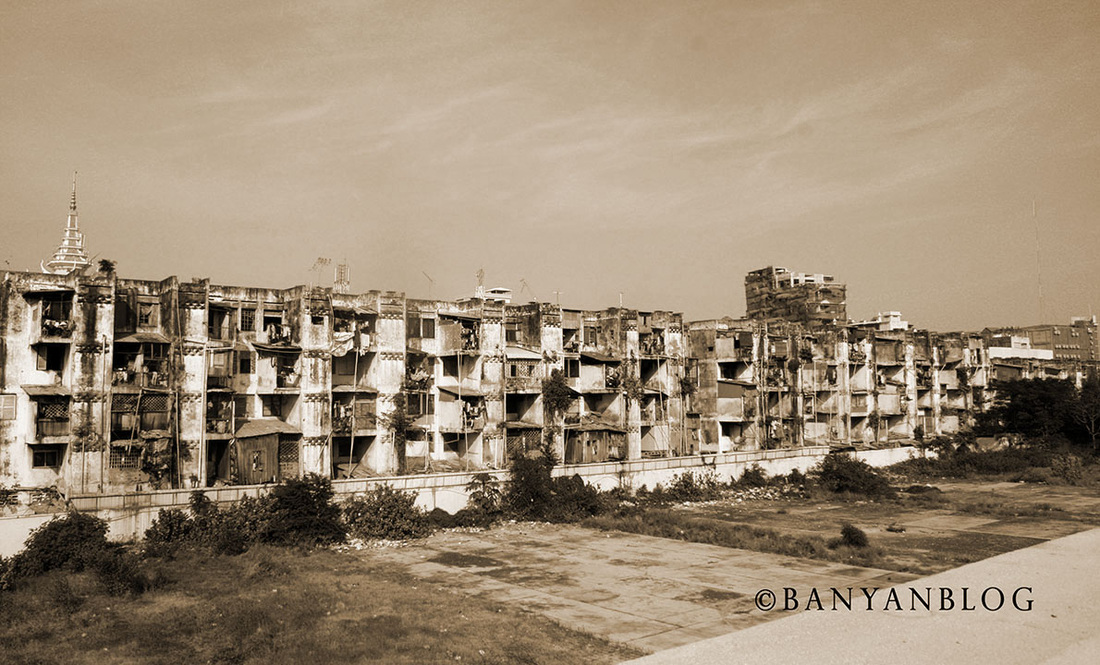| BANYAN BLOG |
banyan blog
|
Over the Pchum Ben holiday last week, I visited Kep, a seaside town about a three hour drive from Phnom Penh. We needed a break from the noise of Phnom Penh and Kep was the perfect reprieve to escape. The lush green landscape, cascading mountains in the background, spectacular sunsets, fresh seafood, and laid back lifestyle was what we needed to break away from the urban jungle. Our time there was short, but it was just enough to remind us the beauty of nature in this resplendent retreat. Slow down, escape the noise and join me on this photo tour to get a taste of tranquility and nature in Kep, Kampot, and Bokor.
4 Comments
 White Building, Phnom Penh, 2014. Built in 1963 by Cambodian architect Ly Ban Hap & Russian architect Vladmir Bodiansky, under the leadership of renowned Cambodian architect, Vann Molyvann. Residents of the building are mostly civil servants, artists, and shopkeepers. A historic site, now there are rumors the building will be demolished. See a slideshow of the building at end of the story. All images © Banyanblog 2014. Part I: An Outsider’s Perspective
When I moved to Phnom Penh last year, I never heard of the White Building. We first lived in the Wat Phnom area and eventually settled down in the Chankarmorn district. Then the White Building was right in front of me, evoking a range of thoughts, fluctuating between seeing it as an eye sore, to a curious fascination of what life was like inside. As it became part of my daily line of vision, I often wondered who lived there? From the outside it looked old, dilapidated, and unsafe. In the daytime, it seemed to be surrounded in a swarm of chaos with shopkeepers selling their goods, children running without shoes, friends chatting in makeshift cafes and barbershops, couples fighting, monks gathering alms, and scavengers digging the trash to find bottles or cardboard to recycle. At night it seemed to be shrouded in mystery, evoking images of unpleasant things happening beneath dark stairwells. These images were all crossing my path, moving along to the rhythm of life there. The building served as a backdrop that seemed to symbolize to outsiders a negative narrative of the country, poverty in plain sight, in the midst of an up and coming area of the city. Icons of the new Phnom Penh are being propped up in a rampant effort to create a new metropolis, particularly in the Chamkarmorn/Koh Pich area, with rapidly growing luxury housing, fine dining, a new casino, and a new high-end mall. These are all in the vicinity of the building and illustrate the stark contrasts of economic inequality that are pervasive around the city. As I passed by on a daily basis, my own ignorance wondered, why doesn’t the city just tear down this place? But that was before I went inside, before I spoke with Pheak Samnang*[1] and before I discovered another side of the narrative, which goes beyond what you see with the naked eye. |
FEATURED INMOST POPULARThe Journey Archives
October 2022
follow |
© banyan blog 2013-2022
All Rights Reserved
All Rights Reserved


